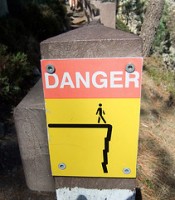
“I didn’t know we were in such a bad shape! How could this happen?” How many times have you heard this from a small business owner whose business is shutting down? For small business owners it is imperative to stay on top of the business like a hawk. Otherwise it is not surprising to wake up one day and find that you are not able to pay your employees or make interest payment to the bank.
We mentioned in earlier post that you have to be able to tell how your business is doing even when someone asks you in the middle of the night. We suggested that you identify key parameters for your business and look at daily, weekly and monthly reports.
We have been asked by number of small business owners if there are simple warning signs that can tell them if the business is headed for trouble – something akin to early warning system. In response, we have come up with 5 metrics that can tell you exactly that. By keeping a keen eye on these metrics you can detect potential problems well in advance and take appropriate actions to correct the path.
Here are those 5 metrics along with explanation of how to calculate them:
- Sales trends – This is an easy one. If your sales is declining for an extended period you are going to be in trouble sooner or later. You need to look at sales trends from two different angles. Compare sales on a sequential basis. For example compare this week’s sales versus last week’s and likewise. In addition, you should compare this period’s sales to the same period last year to l remove any seasonality in your business.
- Average Ticket per Customer – All POS systems have the ability to tell you this metric. Essentially, it tells you how much each customer is spending, on an average, per visit. It is calculated by dividing the total sales by number of visits by all customers in a given period. We recommend that you calculate this on a daily, weekly and monthly basis.
- Number of Repeat Customers – Repeat customers are the lifeblood of your business. The repeat customers are desirable because you don’t have to spend as much money on marketing to them. They will keep coming to your business as long as you continue to provide good product at reasonable value to them.
- Gross Margin – This metric is calculated by subtracting your cost of goods sold (COGS) from total sales. Cost of goods is how much you have to pay your vendors to purchase raw material or finished products that you sell. Declining gross margin could mean either you are paying more to your vendors or your customers are not paying as much for your product.
- Outstanding Receivables – outstanding receivables show the total amount of money you need to collect from your customers. This is the amount your customers owe you for the purchase they made from your business. You know something is not going right with your customers if the outstanding receivables continue to inch up.
It is important to note that these numbers by themselves do not mean much if you are looking at them for just one period. What you need to look at is the trend over a certain period to be able to tell if something is wrong.
In the next post we will show you what these metrics mean and what actions you can take to make sure your business does not end up in trouble. Till then if you know of other parameters you monitor for your business let us know in the comments below.
Related posts:
Benefits of Working with Businesses that are on Top of the Game
How to Create a Better Shopping Experience for Your Customers
How Can Indoor Navigation Maps Help Businesses Attract More Customers
What to Remember When Opening a Branch of Your Business in a Different Country
Sage Advice for UK Small Business Needs







Great article! I think all small businesses need to learn how to recognise these warning signs and take action to resolve them as soon as possible. It is imperative that smallbiz owners don’t just bury their head in the sand!